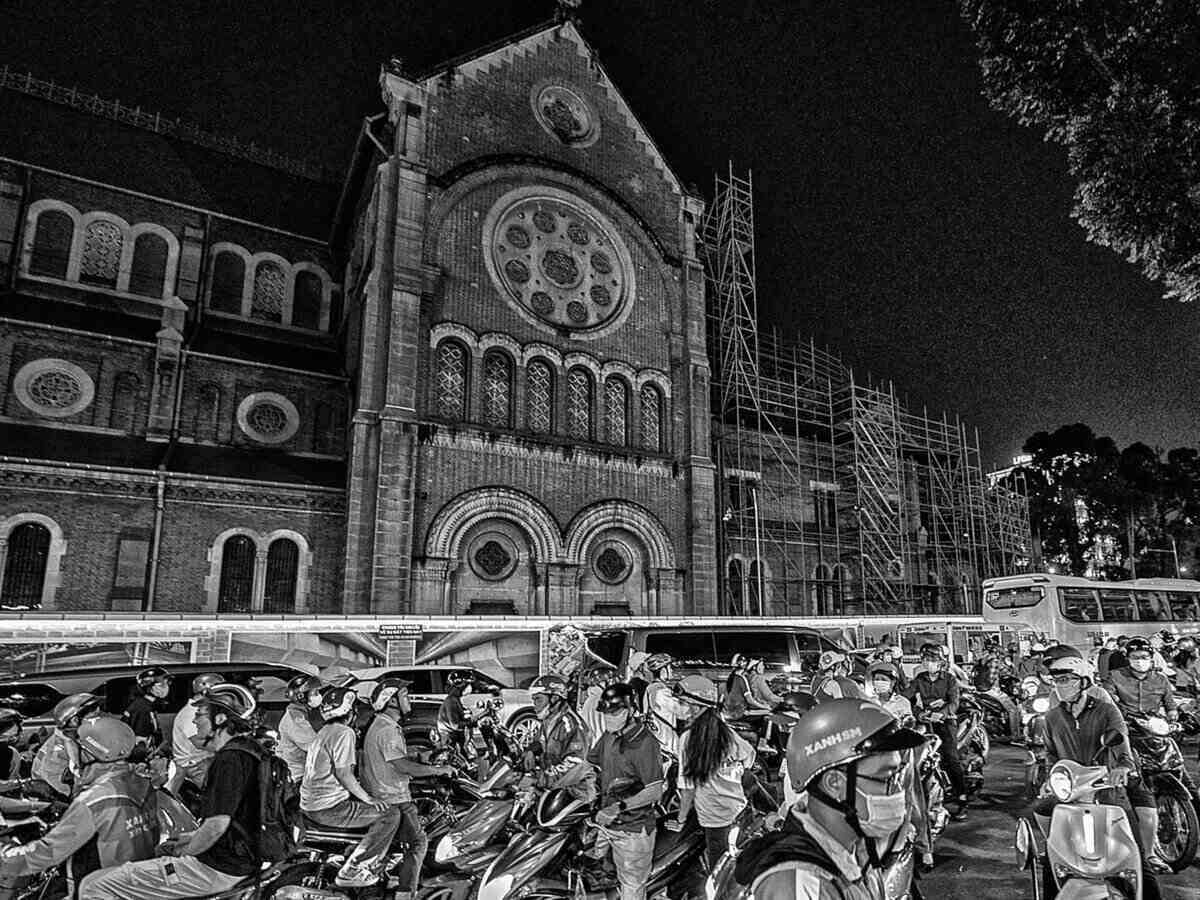When illustrative photos become "decorative photos"
It is not difficult to see that on many websites, photos are used as a form of "fill in the gaps" rather than a valuable content component. The photos of " paintings" that are trungulated, cut and arranged by machines, sometimes not closely related to the content of the article, still appear regularly: The shape of the micro, the symbol of the profession, or the common traffic scene... all evoke a sense of safety, but at the same time... are also insensitive.
From a visual perspective, press photos are not only a side-scraping tool but also a communication work that can lead emotions, create context and even shape readers' perspectives. When a photo fails to express the spirit of the story, it will lose the most basic function of press photography: storytelling through images.
Where is the photo "one photo, ten words"?
There have been press photos that have haunted viewers for decades. The image of baby Kim Phuc running out of the smoke of napalm bombs is a typical example of press photography that can turn history, reaching the world's conscience.
Although there are controversies about the real author of the photo, when the World Press Photo Foundation has just issued a notice, it temporarily suspended the confirmation of Nick Ut as the author of the photo " Napalm Baby", but the historical value of the photo remains intact, like an visual heritage.
During the war, many photos of famous war reporters such as Le Minh Truong, Doan Cong Tinh, Mai Nam... are typical examples of how a photo tells a story without words. Some works also bear the mark of the times, national spirit and a profound humanistic view.
However, entering the digital age, with the intensity of content production, many press photos today are caught up in a whirlwind of speed - lots - compact - cheap. A story told through photos often becomes... a story that is forgotten.
Lack of connection
A reality that is happening in some news agencies is the separation between reporters and photojournalists, leading to the phenomenon of "let one story, illustrate one thing". In many cases, the article is written from the scene but the photos are taken from old documents, or provided by a collaborator. The lack of connection between the writer and the photographer caused the photo to be skewed from the content of the article, or could not depict the depth of the story.
In some small news agencies, cutting staff makes versatile reporters (whether writing or taking photos) a trend. However, not everyone is well-trained in press photography. As a result, the photos taken in a " let there be" style, lacking in layout, momentary, and message - three core elements to tell a story in pictures.

Readers are increasingly opinionated, photos must be more and more real
In the era of social networks, when anyone can take photos and post, press photos must be even different: It must be at the right time, in the right context and especially the nature of the matter.
A photo of people in flooded areas, if taken from a high, clean location, with a "natural" layout that is wrapped around it, can quickly be scrutinized by the online community, even boycotted because of the feeling of "acting". Press photos require absolute authenticity, because that is an important part of creating reader trust.
Recently, some photos have caused a positive response thanks to this "real" element. For example, a photo of an old man convulsing on the side of the road during the cold spell in early 2023 in Hanoi was posted on a website, quickly spread and encouraged many individuals to donate warm clothes. That is a testament to the power of journalism.
worthy investment
If we consider journalism as the industry of conveying information and emotions in both words and images, then press photography needs to be invested in both visual thinking, technique and especially fieldwork time.
Many major news agencies have now begun to build a team of professional photo reporters, permanent residents in many localities, with good and proficient post-production - story processing skills. However, this number is still not large enough to meet the increasing demand for multimedia journalism.
In addition, press photos also need to be more appreciated in their presentation. Currently, many articles still leave photos in small size, without captions or unscientific arrangements, reducing the weight of photos in storytelling. Readers reading newspapers on their phones already have many limitations in terms of screen, so the photos need to be actively optimized for vision.
A press photo can tell a story. A good photo series can tell many layers of the same event. But to achieve that, photojournalists need to have storytelling thinking, social observation skills and compassion for characters in the frame. It is not just that you put up a camera to take photos with the press. And it is not just that with a good camera that you can have a photo that tells the story.
The current situation of Vietnamese press photography is both in excess in quantity and lacking in depth. If we do not change the mindset of photography, do not invest in the team and process of producing press photos seriously, then the risk of press photos becoming "the outsider" in a digital press is entirely possible.
It is time to return press photos to their worthy position - an independent, sharp language, capable of touching the depths of emotion and truth that sometimes, children are helpless.











